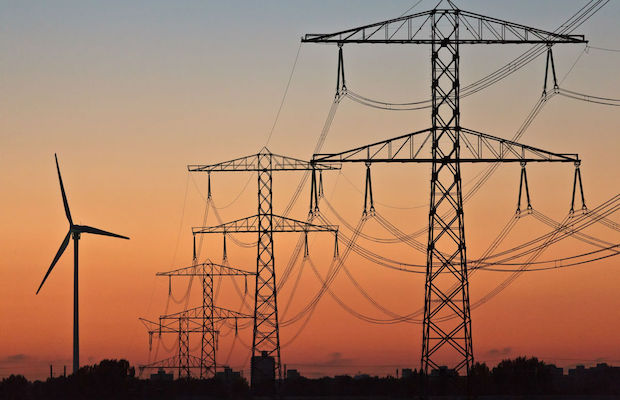A combination of wind and solar power, otherwise known as Variable Renewable Energy, could make up the largest share of power capacity throughout Europe’s major markets – Great Britain, Germany, France, Italy and Spain – as early as 2023, according to a new analysis from Wood Mackenzie. And the success of Europe’s transition to net-zero emissions will hinge on the flexibility of its power system.

By the end of the decade, the two technologies will have completely taken over the market due to strong government auction programmes pushing costs down as deployments ramp up. The additional 169 GW of wind and 172 GW of solar power expected to be connected to the grid between now and 2040 will put unprecedented constraints on current system assets and market mechanisms. As such, flexibility will be vital to support this transition to renewable energy across Europe, the report highlights.
Wood Mackenzie carried out modelling of Europe’s power systems using its hourly dispatch model and combined findings with forecast technology costs and economic models to create a new European energy storage long-term outlook.
“With conventional power plants in decline and non-dispatchable VRE taking over the system, the only dispatchable assets – those that can be used on demand – constructed will be purpose-built flexibility assets. These will be designed to compliment and capitalise on new system architecture,” said Rory McCarthy, Wood Mackenzie Principal Analyst.
Pump storage will remain critical over the next two decades but new-build flexibility assets will be focused on interconnectors, gas peakers and energy storage. Combined deployments of the three technologies will grow from 122 GW in 2020 to 202 GW by 2030 and reach 260 GW by 2040. Without this new fleet, the system would become unmanageable. By the 2030s, however, energy storage is expected to become the winning flexible asset due to plummeting technology costs and VRE’s dominance. Storage across all segments will grow from 3 GW in 2020 to 26 GW in 2030 to 89 GW by 2040.
Over the outlook period, system durations will increase in line with battery cost reductions. By 2040, 320 GWh of energy storage (excluding pump storage) capacity could be available to balance the system on a second-to-second basis. Front of the meter storage will get the lion’s share of this capacity, however behind the meter demand will pick up through 2040 as hybrid renewable systems, electricity bill management and the resilience proposition become increasingly popular.
“For storage and solar-plus-storage, technology costs will continue to decline. The levelised cost for a standalone 3-hour system will reduce by 33 percent through 2030. Its ability to take advantage of peaks alongside gas plants and capitalise on low and negative prices, which gas plants cannot, pushes it into preferred flexible asset territory,” added McCarthy.
Energy storage and interconnectors, alongside demand response, will become the key tools when dealing with common low and negative net load hours. These periods occur when wind and solar generate more power than the system demands. Without these tools at the system operator’s disposal, we would have to curtail an eye-watering amount of clean energy and the grid would cease to provide high-quality reliable power which could ultimately result in blackouts, he added.
“The market needs to provide the right signals for a high capex renewables buildout. Additionally, the system requires incentives and revenues for low carbon flexible solutions that provide value through service provision in addition to selling energy. This will become more apparent to policy makers as we fill the European power system with zero marginal cost, non-dispatchable power,” concluded McCarthy.